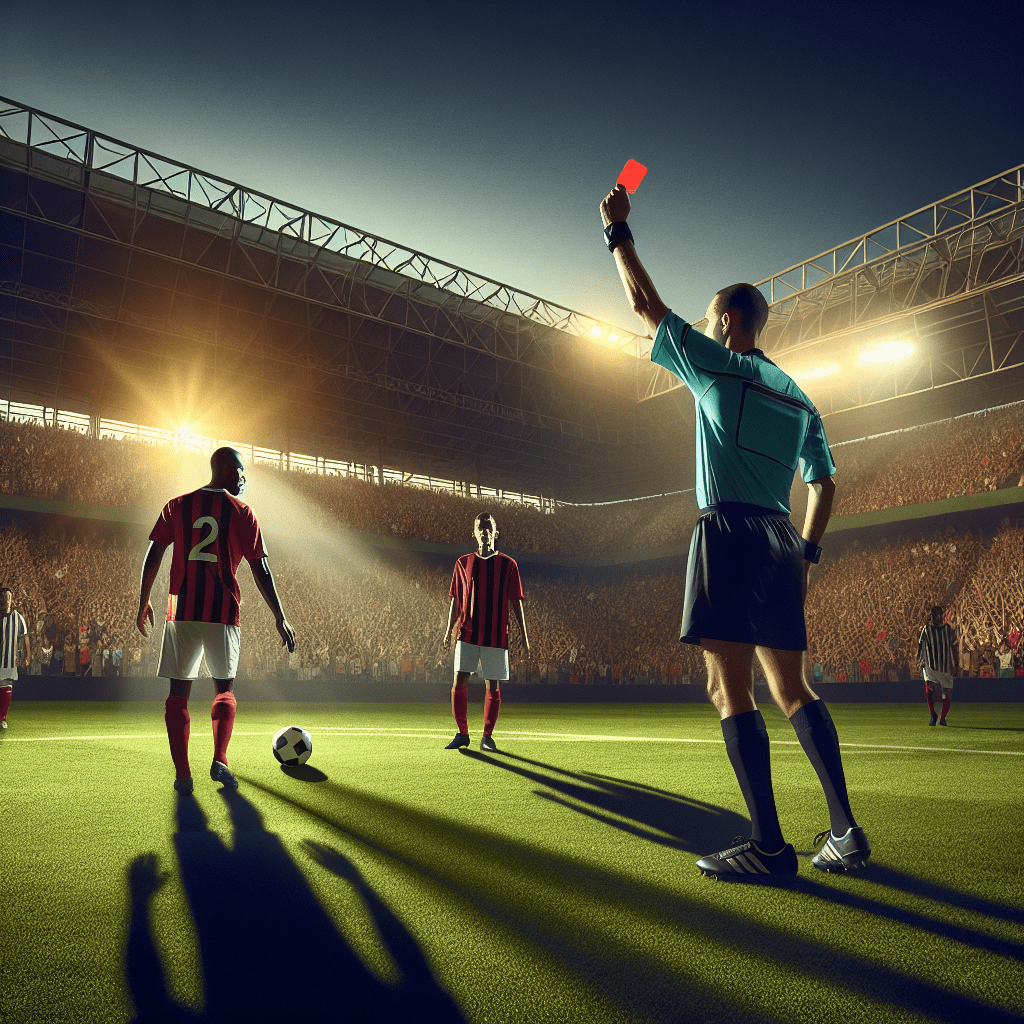[ad_1]
The Hand of God: Examining Soccer’s Most Notorious Referee Decisions
Soccer, also known as football to the rest of the world outside of the United States, is a sport that unites millions across the globe. Much like any other sport, it has its moments of brilliance, controversy, and outright baffling decisions made by its referees. Arguably, no other controversy has had quite the impact or has remained as infamous in the collective memory of soccer fans as the “Hand of God.” This moment and others like it have sparked debates, caused outrage, and even changed the course of soccer history. This article will delve into some of the most notorious refereeing decisions, starting with the “Hand of God” and exploring other controversial moments that have left an indelible mark on the world of soccer.
The Hand of God
The phrase “Hand of God” is now synonymous with Diego Maradona and the controversial goal that he scored during the 1986 FIFA World Cup quarter-final match between Argentina and England. In the 51st minute of the game, Maradona jumped for the ball alongside the English goalkeeper, Peter Shilton, and punched the ball into the net with his left hand. Despite protests from the English players, Tunisian referee Ali Bin Nasser allowed the goal to stand, claiming he did not see the infringement.
The outrage was immediate and intense, primarily because the referee’s decision directly influenced the outcome of such a crucial game. Argentina went on to win the match 2-1, with Maradona scoring another goal, which was later dubbed the “Goal of the Century.” However, it was the “Hand of God” goal that remained the most talked-about moment from that match and indeed, the entire tournament.
Other Notorious Referee Decisions
1. Frank Lampard’s “Ghost Goal” – 2010 FIFA World Cup
During a knockout match between Germany and England, Frank Lampard hit a shot that clearly crossed the goal line after bouncing down from the crossbar. However, neither the referee nor his assistant awarded the goal. Replays clearly showed that the ball had crossed the line by quite a margin. This incident reignited the debate over the use of goal-line technology in soccer, which was later introduced to prevent such errors from happening again.
2. Thierry Henry’s Handball – 2009 World Cup Qualifier
In a crucial World Cup qualifying match between France and Ireland, French striker Thierry Henry controlled the ball with his hand, not once but twice, before passing to William Gallas to score the decisive goal. This handball was missed by the referee, causing Ireland to miss out on a place at the 2010 World Cup in South Africa. The incident led to calls for replay assistance for referees, something that has since been partially addressed with the introduction of the Video Assistant Referee (VAR) system.
3. Andres Escobar’s Own Goal and Aftermath – 1994 World Cup
While not a referee decision, the tragic story of Andres Escobar, a Colombian defender who scored an own goal against the United States in the 1994 World Cup, is worth mentioning. This mistake contributed to Colombia’s elimination from the tournament and, shockingly, led to Escobar’s murder upon his return to Colombia. This incident highlights the immense pressure and consequences that can come from mistakes on the soccer field, whether they are made by players or referees.
The introduction of VAR and goal-line technology has made strides towards eliminating such egregious errors from the game. However, these systems are not without their critics. Some argue that they disrupt the flow of the game, while others believe they are not always used consistently. Despite these controversies, the goal remains the same: to ensure fairness and accuracy in the sport.
FAQs Section
Q: What is the “Hand of God”?
A: The “Hand of God” refers to a goal scored by Diego Maradona during the 1986 World Cup quarter-final match between Argentina and England, where Maradona used his hand to punch the ball into the net.
Q: What is VAR?
A: VAR stands for Video Assistant Referee. It is a system used to assist the referee in decision-making through the use of video replays.
Q: What is goal-line technology?
A: Goal-line technology is a technological system used to determine whether the whole ball has crossed the goal line, thereby assisting the referee in awarding a goal or not.
Q: Why was the “Hand of God” goal controversial?
A: It was controversial because Maradona used his hand to score the goal, which is against the rules of soccer. The referee’s failure to see and penalize the handball is what caused outrage and controversy.
Q: How have technological advances like VAR and goal-line technology impacted soccer?
A: These technologies have been implemented to improve the accuracy of critical decisions in soccer, such as determining goals, penalty decisions, and identifying misconduct that might have been missed by the officials on the field. While they have helped reduce errors, they have also sparked debates about their influence on the flow and the traditional aspects of the game.
Soccer is a game filled with passion, talent, and moments that can swing from triumphant to notorious in an instant. Refereeing decisions have always been a part of this dynamic, and while technology offers new ways to minimize controversy, it’s clear that soccer will always be a sport where debates and “what-if” scenarios abound. From the “Hand of God” to the introduction of VAR, the game continues to evolve, but the passion it ignites in fans around the world remains the same.
[ad_2]






